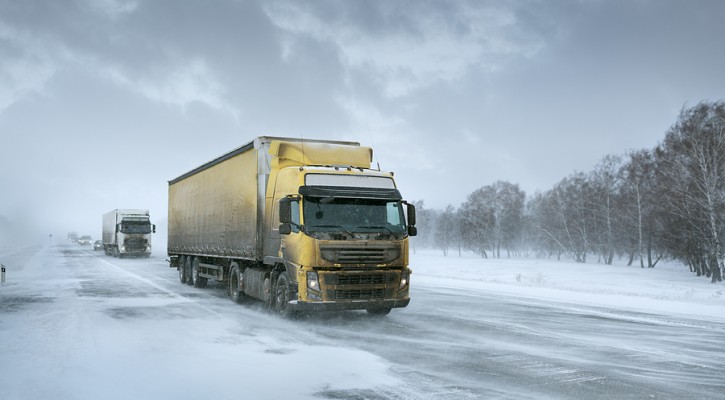
Winter Safety Tip #3: Don’t Follow the Pack
December 17, 2014
Winter driving conditions create the perfect environment for a highway pile-up. That’s why it’s important for truckers to be smarter than the average driver and avoid travelling in packs.
Instead, keep your distance from other vehicles, maximizing the space between your big rig and all the other folks on the road. That way you will have plenty of time to stop no matter how icy, snowy or wet the roads may be.
While maneuvering your ride into the best position in traffic, keep in mind that following distance isn’t the only thing that matters. Vehicles beside and behind your trailer are just as susceptible to stupidity as those in front of you, so find that sweet spot that puts the greatest distance between you and everyone else on ALL FOUR SIDES!
Of course, the best way to avoid following the pack is to plan your trip around peak traffic hours when passing through major cities. Avoid the morning rush and the after-work traffic jam. Getting in and out of the city before 4PM will ensure smooth, time-efficient travels.
Besides the bonus of added safety, driving a greater distance from other vehicles also helps save gas. That means less time out in the cold fueling up, and more time making money behind the wheel.

5 Tips For Smooth Labor Day Travel
August 29, 2014
School is back in session, and the weather is starting to turn, but this glorious Labor Day weekend allows many to get in one last road trip before the season’s end.
While one last road trip may sound like a great idea, your travel plans can quickly turn sour if you get caught in gridlock. With an improving economy and gorgeous weather, the traffic forecast isn’t looking pretty. In fact, AAA is predicting 35 million people will trek more than 50 miles from home during the Labor Day holiday, mostly on our nation’s roads.
So before you hit the road, read up on these fool-proof travel tips for smooth Labor Day travels:
1. Take the scenic route.
Look for scenic country routes and local roads that run parallel to highways and interstates. Although it may look like a longer drive on the map, you’ll save plenty of time by avoiding heavy traffic. Plus, you’ll have a much more scenic, easy-going and enjoyable trip away from all the frantic insanity of risky highway drivers.
2. Know your route BEFORE you leave.
Holiday travel is much easier when you know where you are going. Rather than relying on GPS and mobile phone apps to tell you the way, look at a good old-fashioned map and plan your journey. When driving through new territory, it’s common for electronic devices to fail, especially when cell phone service is spotty. Avoid the frustration and distraction all together by planning the drive carefully and paying attention to where you are.
3. Get your music ready.
Fill up your MP3 player, organize your CD’s, and program your radio stations before you leave. Fiddling with the radio can become a major distraction, so have your music ready to go before you hit the road.
4. Do a safety check.
When is the last time your changed your oil? If it’s been around 6 months, then it may be time for a change. Also, be sure to check your lights and turn signals, making sure that all the bulbs are in good working order. And, last but not least, make sure your tires are in good condition. Check for tread ware and use a tire gauge to ensure they are properly inflated. Properly inflated tires will save you money at the gas tank, and improperly inflated tires can drain your gas mileage, or worse, cause tire damage or a blowout.
5. Pack the snacks.
Bring drinks and snacks for the road to avoid unnecessary stops. Save your time and money for the destination, or at least for a meal at a good local restaurant, rather than wasting cash on gas station junk and fast food.
And remember, as always, to #DriveSafe!
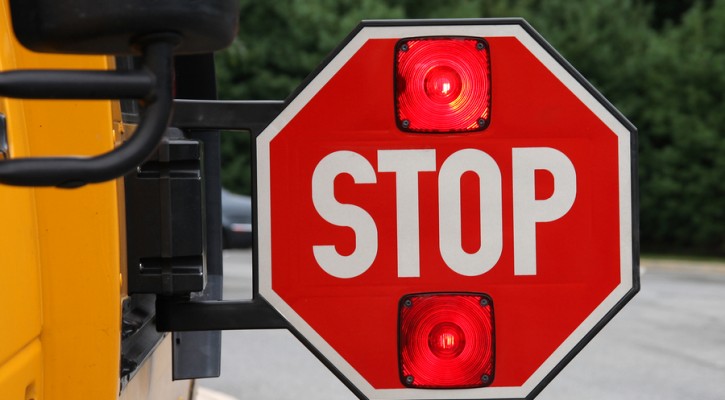
Back-To-School Traffic Tips
August 27, 2014
It’s that time of year again. It’s time for students to say goodbye to summer fun and head back to school. That means drivers should be on high alert to avoid collisions and fatalities related the back-to-school season.
These back-to-school traffic tips will prepare you for another school year behind the wheel:
1. Watch for increased pedestrian traffic.
This is especially true in the early hours before school starts, as well as in the afternoon when school lets out. According to the National Highway Traffic Safety Administration (NHTSA), more school-age pedestrians have been killed between the hours of 3 p.m. and 4 p.m. than any other time of day. So, drive slowly around school zones and bus stops. Also, keep a look out for kids walking to and from school, as well as neighborhood kids hanging out in the after-school hours.
2. Mind school zone speed limits.
Speeding in a school zone will get you a traffic ticket real fast. However, it could also result in something much, much worse: a fatal accident. So be sure to slow down in school zones and drive carefully. Also, avoid distractions such as cell phones and mobile devices.
3. Know the school bus signals.
Flashing yellow lights mean that the school bus is preparing to stop to load or unload children. That means that you should slow down and prepare to stop as well.
Flashing red lights and an extended stop sign at the front of the bus mean that you should bring your car to a stop, no matter which direction in traffic you are driving. As you approach the school bus, come to a complete stop. Do not attempt to continue driving until the stop sign retracts and the red lights stop flashing.
4. Beware of after-school activities.
Football practice, band practice, cheerleader practice and other after-school activities are already underway, meaning that drivers should be cautious well after school hours are over. There will also be games and scrimmages that attract large crowds this fall season, so be prepared for some school-spirited traffic.
Whether you live in the big city or a small cow town, these back-to-school driving tips will help you become a better driver and keep the streets safe for the school season.
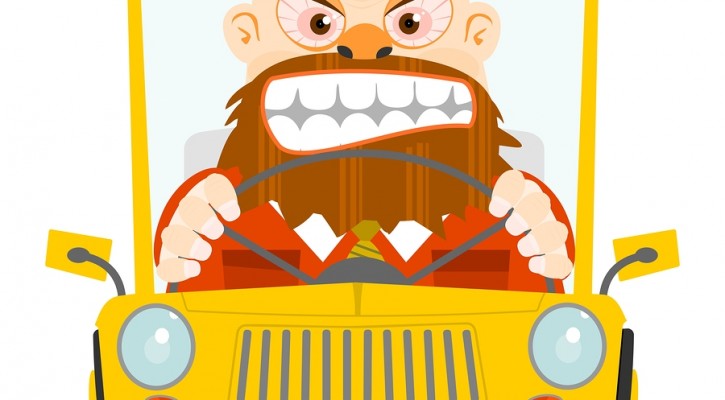
Don’t Be a Menace: The 5 Worst Driving Habits
June 29, 2014
Kindness is contagious, but so is road rage. Don’t start a road rage rampage by committing one of the 5 Worst Driving Habits:
- Tailgating. There’s never, ever, ever a good reason to ride someone’s bumper. If you’re driving faster than the person in front of you, then pass them. If you can’t pass them right away, stay a safe distance behind until it is clear to pass. By riding their bumper, not only are you driving dangerously, but you are also blocking your own view of the road ahead. Also, you are most likely infuriating the other driver, which will only make them drive slower to spite you.
- Turning/Merging Without Blinkers. There is this handy lever by your steering wheel – it controls the blinkers – and it’s there to let other drivers know when you’re about to turn or merge. USE IT! Use it when you’re changing lanes. Use it when you’re turning right. Use it when you’re turning left. Use it when you’re merging. Use it when you’re exiting. Use it when you’re planning on turning left at the stoplight. Don’t be shy. Blinkers are one of the only ways for cars to communicate with each other, so use them.
- Cutting People Off in Traffic. There’s no need to cut off another vehicle in traffic. Being one car ahead isn’t going to drastically change your commute time. If you can’t pass someone safely, then don’t pass them at all.
- Driving Too Slow. Driving 40 mph on a 70-mph highway isn’t just annoying – it’s dangerous. It’s also illegal, depending on the speed of traffic and your own state’s laws.
- Left Lane Cruising. The left lane is for passing. Period. When cars stay in the left lane and drive at the same speed as the rest of traffic, they create congestion behind them. So if you’re not passing someone, then you shouldn’t be in the fast lane.
Let’s make the world a more peaceful place by driving like the safe, responsible, respectful people we are. When everyone has good highway etiquette, everyone wins. Traffic flows smoothly, kindness wins over road rage, and the backdrop fills with sunshine, bunny rabbits and rainbows.
Steering Your Way Out of a Crash
June 19, 2014
Driving a truck is both science and art. Driving a truck through an emergency situation requires mastery in both categories, especially when it comes to avoiding a crash. In most cases, you will have to make a choice between braking and steering your way out.
When travelling over 25 mph, it is usually better to opt for the steering option. This is because large trucks require a longer distance to come to a controlled stop, and the reaction time for swerving is faster than the reaction time for braking. However, good steering skills is a must.
This is why instructors advise drivers to keep both hands on the steering wheel: they will need them for quickly turning the wheel one-half turn in one direction, then turning it back almost a full circle in the opposite direction to swerve around an object or vehicle. Maintaining control and returning to center steering as you continue moving will require two hands and plenty of focus.
You might have heard the old expression “hands at 10 and 2”, however, these days the DMV suggests keeping hands in the 9 and 3 o’clock position or the 8 and 4 o’clock position, depending on which is more comfortable. The DMV also recommends keeping your thumbs along the face of the steering wheel instead of gripping the inside of the rim. The new guidelines were put in place to for three major reasons:
- You will be less likely to overcorrect during an emergency steering maneuver, which could cause you to spin out of control or run off the road.
- It is less likely the air bag will throw your arms and hands back into your face if you are involved in a crash.
- Your arms will be more comfortable and less fatigued during long drives. A 10 and 2 o’clock hand position is acceptable; however, if your air bag deploys, you are at risk of injury.
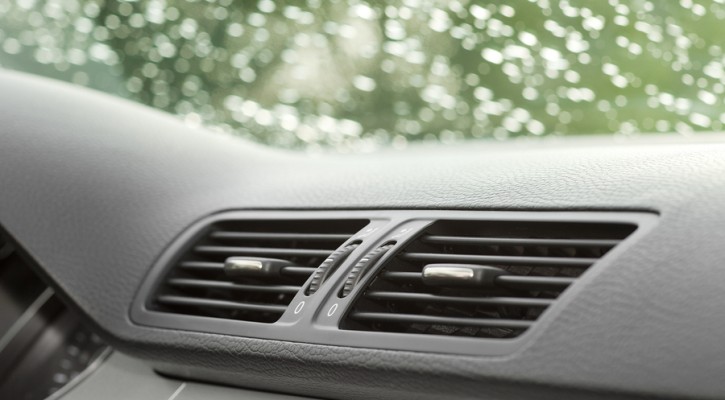
Tips To Cool Down a Hot Car Down Quickly
June 5, 2014
Driving an oven is dangerous. Follow these tips on how to cool down a hot car during the sweltering summer months:
1. Roll down all the windows. For better circulation, don’t roll them down together, but one after the other.
2. Crank up the air-conditioner. Be sure to put it on the fresh air setting, not the recirculate setting since the temperature outside will be much cooler.
3. Drive for a minute before rolling up the windows to allow all the hot air to escape.
4. Once the air from the A/C vents feels cooler than the air outside, it’s time to roll up the windows.
If your car is too hot to handle safely (the metal causes third-degree burns, the seats are melting, and the steering wheel is too hot to touch), then try this nifty trick from LifeHacker before hitting the road:
http://lifehacker.com/5823069/how-to-quickly-cool-down-your-cars-oven-like-interior
This trick from fine folks at lifehacker may look a little funny, but it’s one of the fastest ways to cool down a hot car when summer heat really gets it baking.
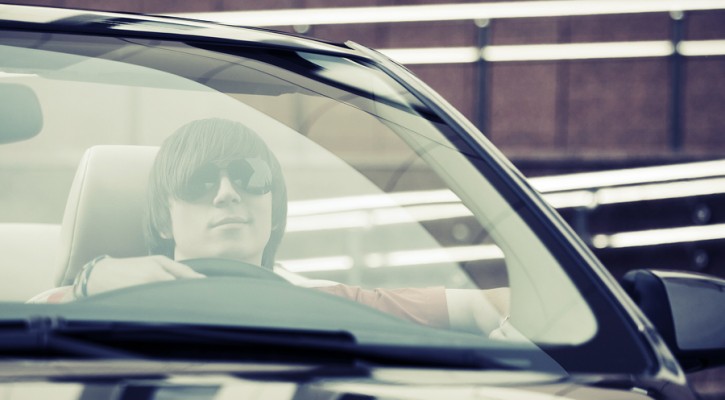
Teen Drivers’ Summer Survival Guide
May 29, 2014
With the passing of Memorial Day weekend, teens now face the 100 deadliest days of driving this year. The school year comes to an end, summer begins and traffic fatalities sky rocket through June, July and August. Why?
One reason is simple: there are more teen drivers (aka novice drivers) on the road. In fact, one of the greatest dangers to teen drivers is other teen drivers. One way to avoid collisions with other teens is to take extra caution when driving through the usual hangouts, especially the mall.
Having multiple passengers can also increase a teen driver’s crash risk. The combination of multiple conversations, phone usage and loud music is common, and all this commotion in a confined space can easily lead to distracted driving accidents. As the driver, a smart teen should make it a priority to get everyone from point A to point B without crashing or getting pulled over. That will earn much more peer respect than driving distracted, carelessly or recklessly and putting everyone in danger.
Another common cause of summer traffic fatalities is alcohol. Not only must teen drivers steer clear of drinking while driving, they must also steer clear of other drivers under the influence. By avoiding alcohol-prone areas such as bar districts and party spots, teen drivers can manage to make it through the summer without an alcohol-related accident.
Since traffic fatalities are a leading cause of teen death, and fatality rates are 3X as high during the summer months, it is important for teen drivers to take these tips to heart.
May: Month of the Motorcycle
May 1, 2014
May is Motorcycle Awareness Month, and states across the U.S. are unleashing their public awareness campaigns to promote motorcycle safety.
In Texas, officials encourage motorcyclists to look out for each other, and have posted “Share the Road” and “Look Twice” signs to remind drivers to be safe as motorcycles increasingly come out of hibernation. Meanwhile, up in the north Michigan Secretary of State is promoting motorcycle safety by hopping on his Harley-Davidson Sportster and riding with a group of fellow motorcyclists. Governors, legislators, and average citizens are joining ABATE (American Bikers Aimed Toward Education) in conferences and events to promote the month of the motorcycle, with a great emphasis on biker safety and sharing the road.
Here are some helpful tips for motorists on the road during May’s Motorcycle Awareness Month:
- Always double-check mirrors and blind spots before changing lanes
- Look twice before pulling out of parking lots and driveways, or when turning at intersections
- Use those blinkers! Turn signals should be used when changing lanes, merging with traffic, or making turns
- Don’t be fooled by a flashing turn signal on a motorcycle – motorcycle signals are often not self-canceling. Wait to be sure the motorcycle is going to turn before you proceed.
- Give motorcycles more following distance, since they are capable of braking quicker and are more vulnerable in emergency situations
And, we have several important safety reminders for motorcycle riders as well:
- Wear a DOT-approved helmet
- Never ride while impaired
- Always signal turns, merges and lane changes
- Wear brightly colored protective gear, but ride as if you are invisible
- Avoid blind spots
The Case Against Left-Hand Turns
May 1, 2014
The left-hand turn is an essential skill that we all must master. However, learning how to avoid left-hand turns may be equally important. To make the case, we’ve rounded up a few interesting, and frightening, facts about turning left:
- 53.1% of crossing-path crashes involve left turns. Only 5.7% involve right turns.
- According to a study by NYC transportation planners, left-hand turns are 3X more likely to cause a deadly crash involving a pedestrian than right-hand turns.
- 36% of fatal motorcycle accidents involved a vehicle turning left in front of a motorcycle. Considering that nearly half of motorcycle accidents are single-vehicle (meaning the rider was the only one involved), that 36% is quite a significant number.
These statistics are often considered when city planners hit the drawing board. Many transportation systems use round-abouts to avoid the left-turn problem, while others are considering the more innovative “diverging diamond interchanges“.
Whether or not your own city has developed solutions to the left-turn dilemma, you can always use the old “three rights makes a left” maneuver when navigating through high-traffic and pedestrian-heavy areas such as downtown. In fact, this method can improve time and efficiency when the streets are especially congested.
It Pays to be Safe
April 25, 2014
All too often, companies try to take advantage of their drivers by forcing unsafe practices and punishing those who don’t comply. However, in the end, the good guys always win and the safety of the drivers and the public at large is protected.
The most recent case involves Absolute Waste Removal, who fired a driver after raising safety concerns about new procedures. In a news release from the U.S. Labor Department’s Occupational Safety and Health Administration, it was reported that the company had to reinstate the driver, pay more than $23,000 in back wages with interest, pay $50,000 in compensatory and $50,000 in punitive damages, as well as pay attorney fees.
So, let this be a lesson for all you new drivers. Never break the law and put yourself in danger because of company policy. It is truckers who must pay the fines for driving over hours, and truckers who bear the responsibility for crashing because of fatigue. In the end, it pays to be safe.
